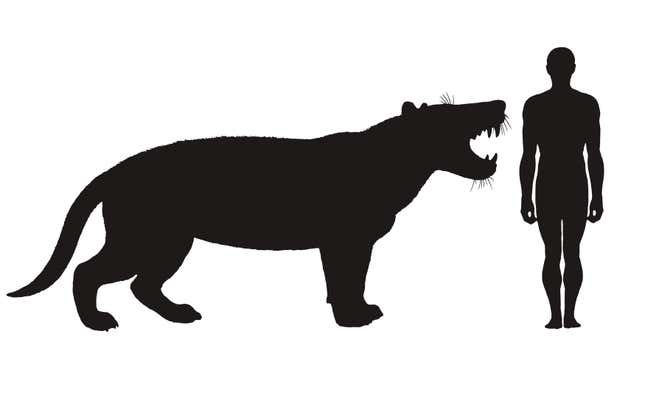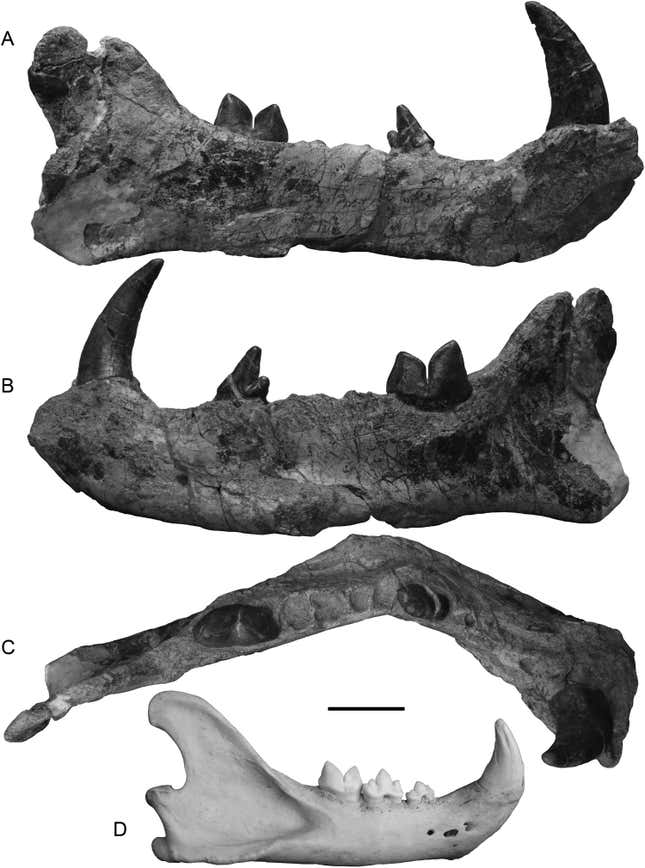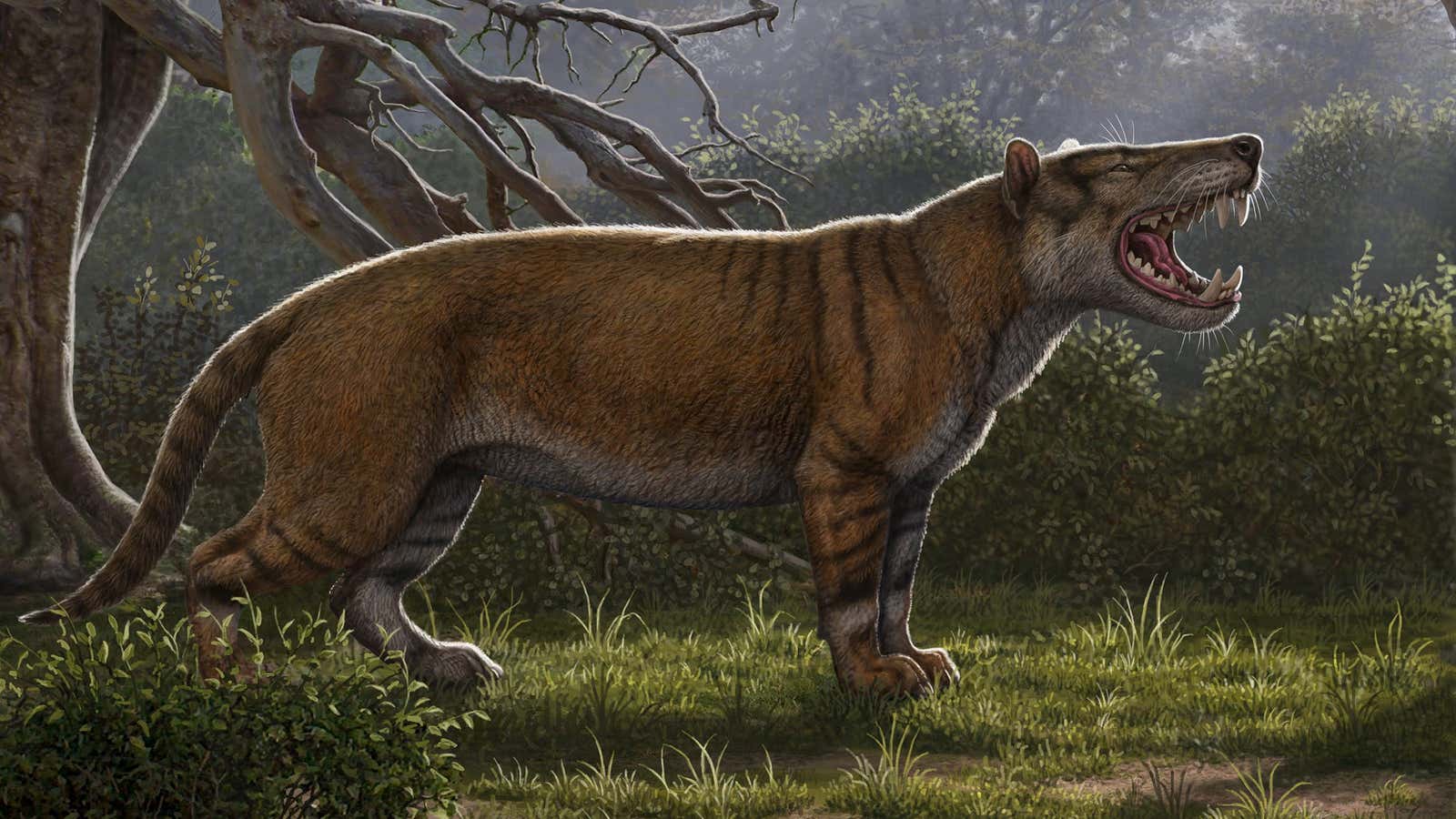It was a stroke of serendipity that led to a historic finding.
For years, in a cabinet at the National Museums of Kenya, were stored the fossils of a predator that lived 22 million years ago in Africa. Simbakubwa kutokaafrika, Swahili for the “big lion from Africa,” was a gigantic mammalian carnivore that researchers now believe was “possibly larger than a polar bear.”
The creature was part of an extinct group of animals known as hyaenodonts, whose teeth resembled those of a modern hyena but aren’t related to hyenas.
In 2010, Ohio University paleontologist Nancy Stevens was working in Nairobi when she saw a chunk of rock containing massive teeth at the museum. In 2013, paleontologist Matthew Borths also found the same fossils in a cabinet that was part of a collection marked “hyenas.” Borths reached out to Stevens who confirmed she had come across the same. The creature’s jaw and other bones and teeth had been put there after being found at a site in western Kenya in the late 1970s.
“It was like the two of us could commiserate, like, Isn’t this amazing, we should do something!” Borths told National Geographic. The two published their findings this month in the Journal of Vertebrate Paleontology.

Scientists hope the findings could help them understand more about hyaenodonts and other giant carnivorous predators. It also could help explain Simbakubwa’s eventual demise. Borths says the carnivores could have succumbed to dramatic climate change as intense wet and dry season precipitated the growth of grasslands about 10 million years ago and leading to the scarcity of prey including early elephants.

In recent years, scientists and photographers have increasingly been capturing and surfacing interesting research about wildlife in Africa. In February, the “first high-quality camera trap photographs” of a black leopard in Africa were also captured in the Laikipia Wilderness Camp in central Kenya. In 2018, archaeologists unearthed Egyptian tombs and cat mummies dating thousands of years, some of them still in great conditions. Using laser lights, scientists last year discovered the remains of a southern African city that was occupied from the 15th century until about 200 years ago.
Sign up to the Quartz Africa Weekly Brief here for news and analysis on African business, tech and innovation in your inbox
